If you've ever seen horseradish growing, you might have wondered "can I eat the leaves?". The answer is yes, definitely. But you'll need to like your bitter greens.
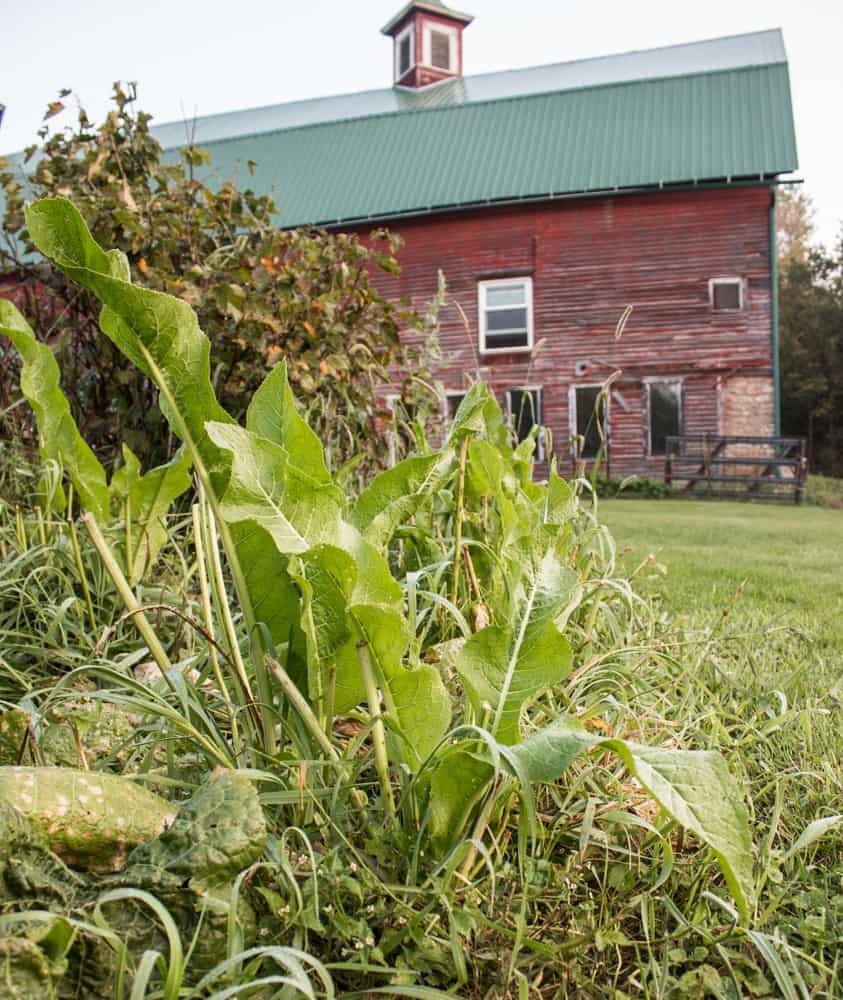
Horseradish leaves are a great example of finding underused parts of plants to enjoy, I mean sure, everyone is familiar with jars of horseradish you find on grocery store shelves, but the leaves create different possibilities and dimension for working with the flavor of horseradish, which, if you've ever eaten prime rib, you know is great with meat.
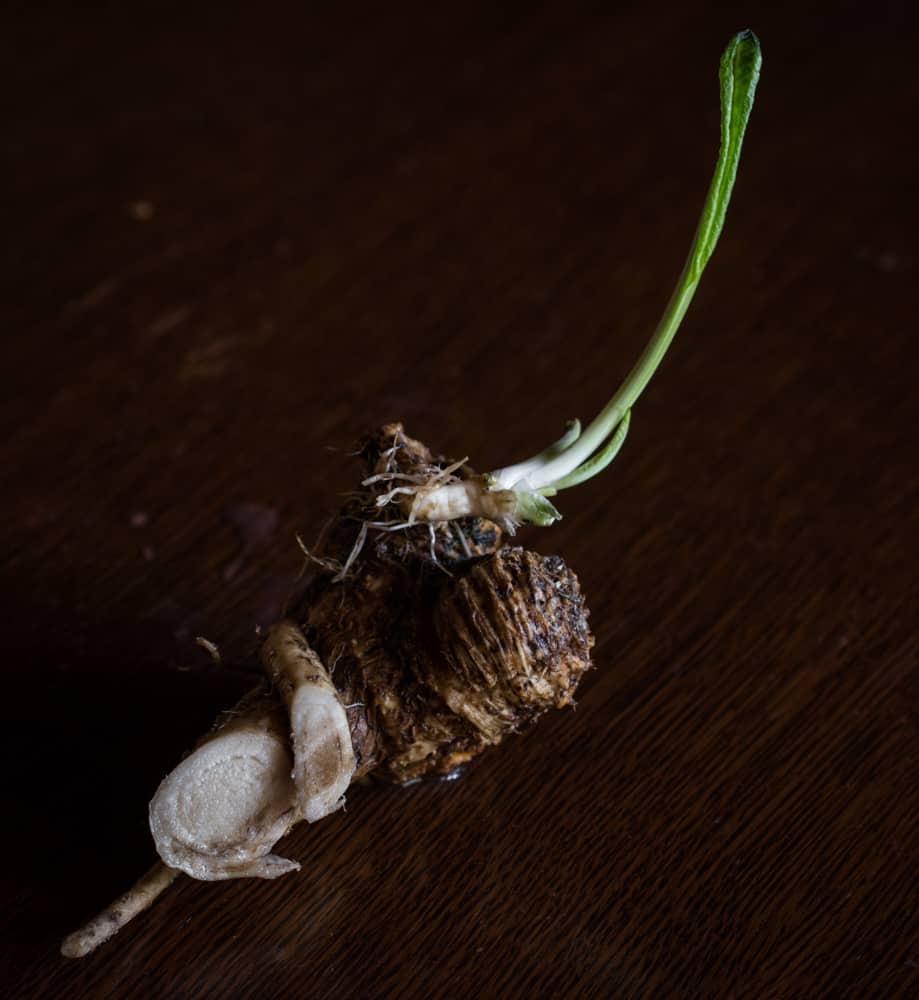
I like the leaves for a couple reasons. First they're easy to identify if you find them in the wild, which I do occasionally. Nothing really comes close to resembling the tall deep green leaves and thick stems they have.
Sorrels, Rumex sp, etc can come close, but crushing one in your hand and smelling them will give them away quickly, since they smell, well, like horseradish. Secondly, these things grow fast. I've clear cut the leaves off of a colony and come back a week later to harvest more greens.
Bug Damage
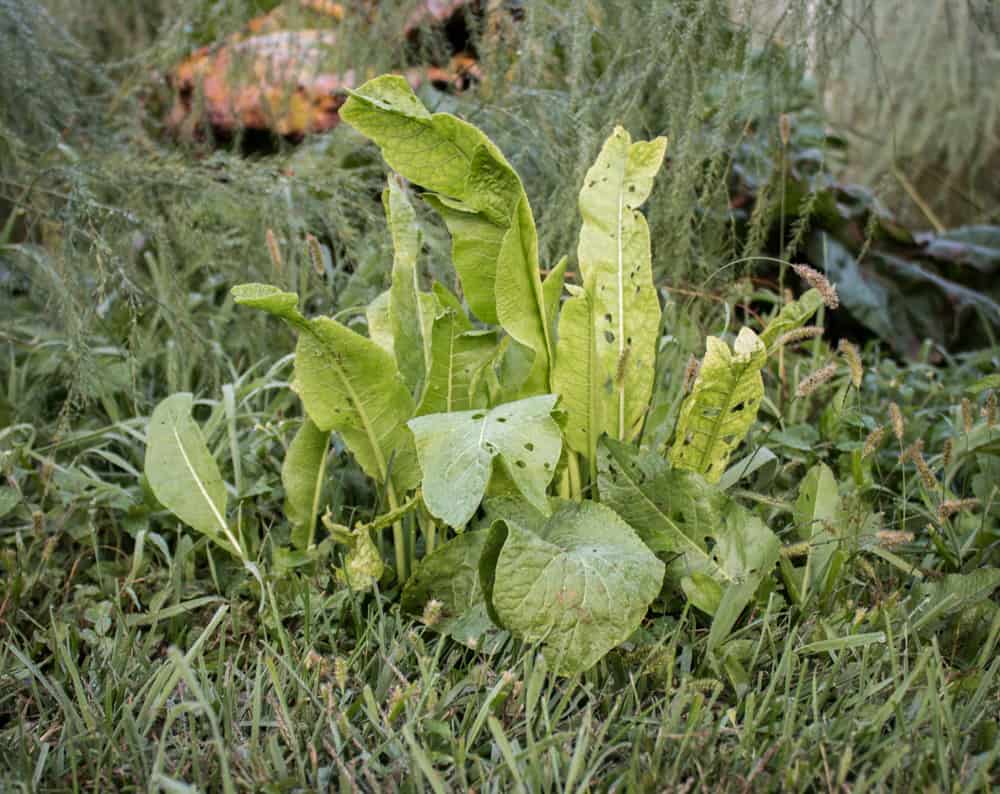
Where I live, the horseradish greens are beloved by bugs that eat holes in them, to ensure I get the best quality leaves, I regularly trim them.
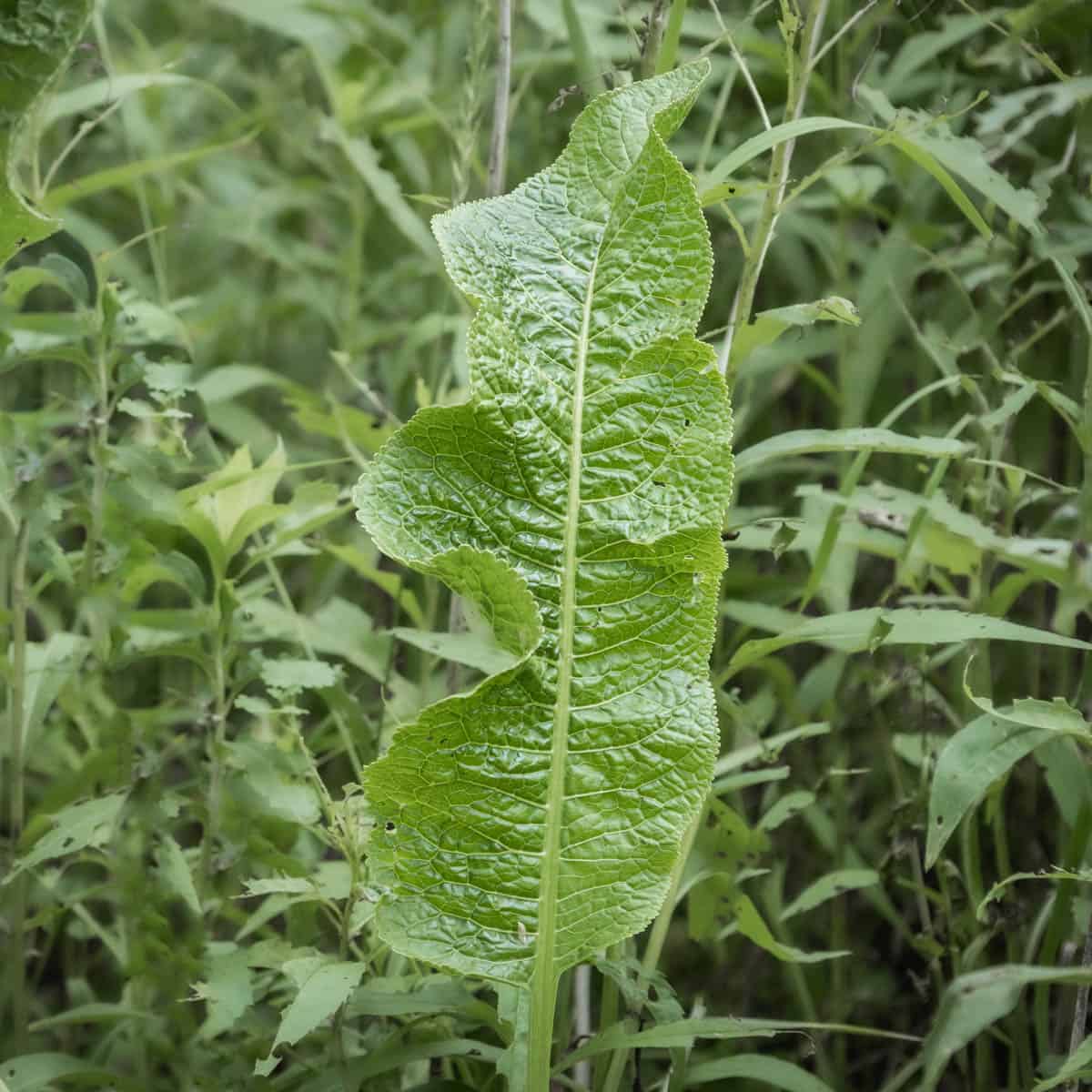
Processing, cooking, and creative uses
As far as cooking, the only real thing to know is that, just like the roots, horseradish leaves have a strong flavor, and if you aren't ready for it, they definitely come off as intense.
You can eat the leaves raw, but I usually find myself cooking them, as much for helping to curb their intensity as for the fact that I like to cook greens since I can ingest more of them in a sitting.
The flavor of horseradish leaves is great though, and a fun way to showcase a part of the plant that doesn't get much, if any attention. Besides their strong flavor, the shape and specifically their length is useful too.
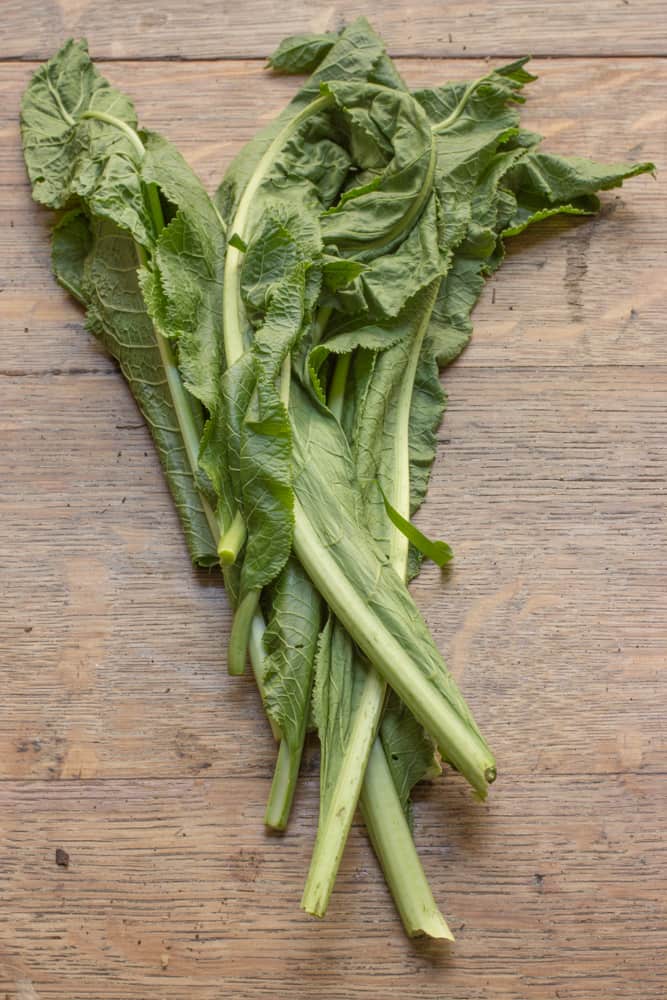
After removing the stem, you get left with two lobes of leaves which can be roughly the size, (or often longer) than lacinato/dinosaur kale.
Leaves that long, with a strong flavor can be used to do things that other, smaller greens wouldn't be able to, think blanching them and lining a terrine of cooked, gelled beef, or wrapping up meat in small packages like grape leaves.
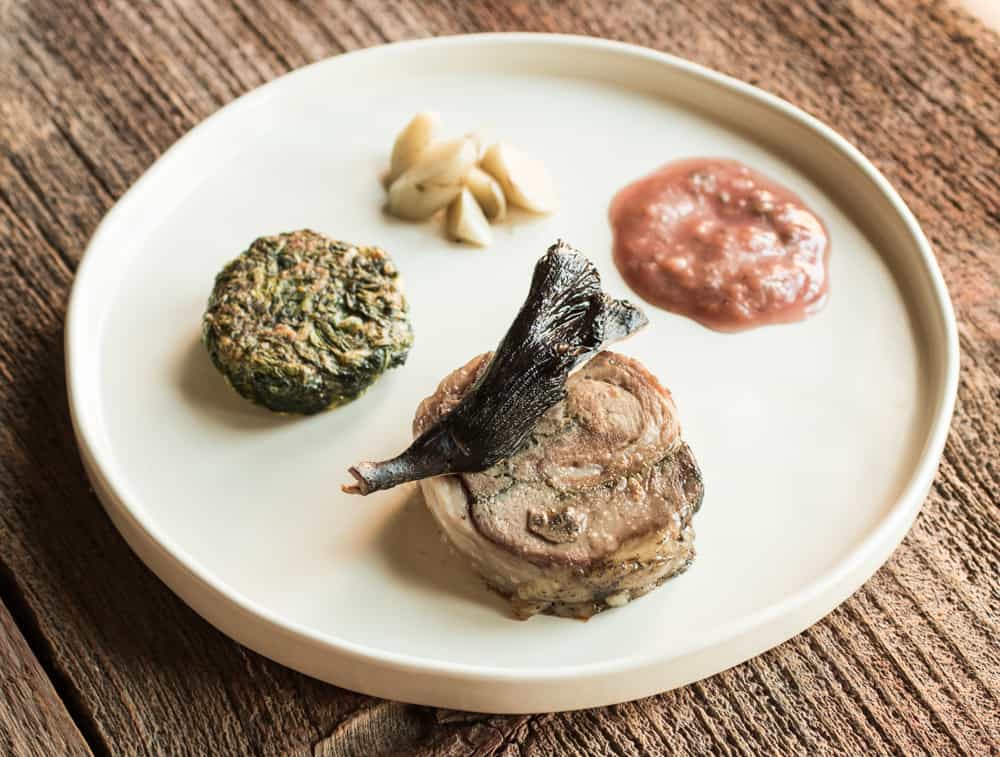
My trick for cooking horseradish greens
I've been cooking with these for a number of years now, and after serving them to plenty of people, I can tell you that most people who aren't used to bitter greens may not like them. Personally, I love bitter greens for what they are, and think they make a great foil for rich things like smoked meat, especially beef and pork.
Even so, some people will need help to like these, so I have a trick for helping people enjoy their flavor: I cook the greens with 50% of their weight with another mild, palatable green, like spinach, lamb'squarters, nettles, etc.
Combining them with other mild greens also serves the purpose of stretching them. One of the first things you might notice about horseradish leaves is that they're thin, and don't have a ton of weight.
After cooking, they lose a lot of volume, so working them into a blend of cooked greens helps not only to make them go further, but tames them a bit for the uninitiated.
Preserving
Blanching, shocking and freezing is, hands-down, my go-to method for preserving horsey greens. Bring a pot of salted water to a boil, drop in the greens, cook for a few seconds until wilted, then transfer to an ice bath.
When they're chilled, remove the greens, squeeze out most, but not all of the water, then put into a plastic bag, seal tightly, label, date, and freeze.
The salt and a little bit of liquid help to preserve the color and integrity of the greens much better than something like simply freezing raw, which will get freezer burn easily.

Steve
Here in the UK it can be tricky to identify horseradish plants: look at the leaves in the photo, they have a fine serration along the edges. This will differentiate horseradish from dock.
Alan Bergo
And one tiny taste will tell you. Even the most bitter dock won’t come close to the bitter flavor of horseradish leaves, that also taste strongly of horseradish.
Barbara Hill
I make half and half Turnip greens. Find a turnip green recipe that sounds good to you. I love Horseradish because I am allergic to most spicy peppers. Mine favorite turnip recipe is bacon, onion, salt and pepper. I also use them like wraps, tuna, regular sandwich stuff. Mmmmm
Alan Bergo
Yum. Thanks for sharing Barbara.
Amos Picker
I stuff them as UI would Grape leaves. I have them in my garden and they are huge. I cut only the hard bottom of the stem. When I blanch the leaves with eth stem they become very playable for stuffing. I did not taste the intense flavor of teh horseradish they mention above. in fact these are very neutral in taste to use even raw and chopped into the salads as you would Lattice. Especially, into he ISraeli shopped salad.
Alan Bergo
Great idea.
Duckteacher
My Great-Grandmother was Hungarian and she used to use the leaves in place of cabbage to make cabbage rolls (horseradish rolls?!). I heard they were AWESOME!
Alan Bergo
I meant to try them this year and didn't get to it. I'm setting a calendar reminder now. Thank you.
Charlayne
I live in central Alberta, Canada. Our winters get to -40C. We planted a single horseradish in our potato bed, not knowing how aggressive it can be. It comes back stronger and bigger each year.
This year it produced giant clusters of small, white flowers which were great for pollinators, but I could still do without the ever-expanding roots.
I'm going to be experimenting with a spin on old-fashion cabbage rolls to see if we can create a freezer-friendly meal option to use the leaves more regularly.
Always happy to find new ideas to use the leaves -- they're so abundant, and I always hate putting the majority of them into the composter.
Christopher J. Amos
Do NOT plant horseradish adjacent to another garden space. I have a patch of horseradish about 25 feet long by 10 feet wide, that grew from ONE plant, next to an area where I till the soil to plant potatoes. It spreads 8 - 10 feet into the rows of potatoes every year and every year I have to dig them up to remove them. Fortunately I trade a bushel of horseradish roots to a nursery for plants for the garden every year to save some money.
Also: Do NOT process horseradish root indoors as the fumes become unbearable throughout the house; this is not an exaggeration. The roots can be washed indoors but then pick a location outdoors with access to an electrical outlet for your food processor or blender.
Tom
Thanks for the cooking ideas!
There’s a variegated variety of horseradish that’s much less invasive, so good for cultivation in home gardens.
Alan Bergo
Thanks that's helpful.
Kai
Anyone live in the north (Zone 2) (-40 for a couple weeks or more a year) and have potted horseradish?
I did it this year and wondering if they make the winter in pots with all the cold, or if its a replant situation.
I know you can have them survive the winter, but specifically wondering for zone 2 or colder.
Lynnette
I live in Zone 3. My Horseradish returns stronger every year. I have them isolated at the side of my house in narrow bed to prevent spreading into my main garden. Today, June 13 2023 will be my 3rd harvest of these leaves so far as they grow quickly. I had heard about putting in pots but my guess is that they are so hardy that they would do well just as my both my onion and garlic chives do, both of which are in pots. I think if the pots are sheltered from the North wind and mulched, and close to your home they may survive your Zone 2. I am going to divide the roots and put them in a companion pot. We will see how they do through a cold Manitoba winter. All we can do is try and experiment.
Samantha
Hi there! We are zone 2b (Northern Ontario) and have had no issues with overwintering and have had great spring flushes of horseradish. We have rustic raised beds for our crops. We have not mulched and it comes back year after year.
Side note: we have split the roots in the fall and have planted in various spots on our property and all have come back with no additional winter prep.
Good luck growing!
Alan Bergo
Thanks for sharing Samantha.
Jo
when harvesting the roots, leave an inch. Then shove back into the ground. The upper leaves will die off, but the root will start growing again. I rotate these to a separate area and let grow without harvesting for a year. You can still harvest leaves.
Alan Bergo
Thanks Jo
Judy
I potted my horseradish last year, got busy in the fall and so did not harvest it. It came back and looks beautiful this year. I will find out in the fall what the leaves actually look like, leaves look amazing. I am in Delisle, Sk so I think we are actually zone 2B
Jim Noyes
Below -30F here, they survived when other plants that usually do didn't. Ideally give some protection, straw, leaves, & less exposed to winter thaws I think
Alan Bergo
Thanks Jim.